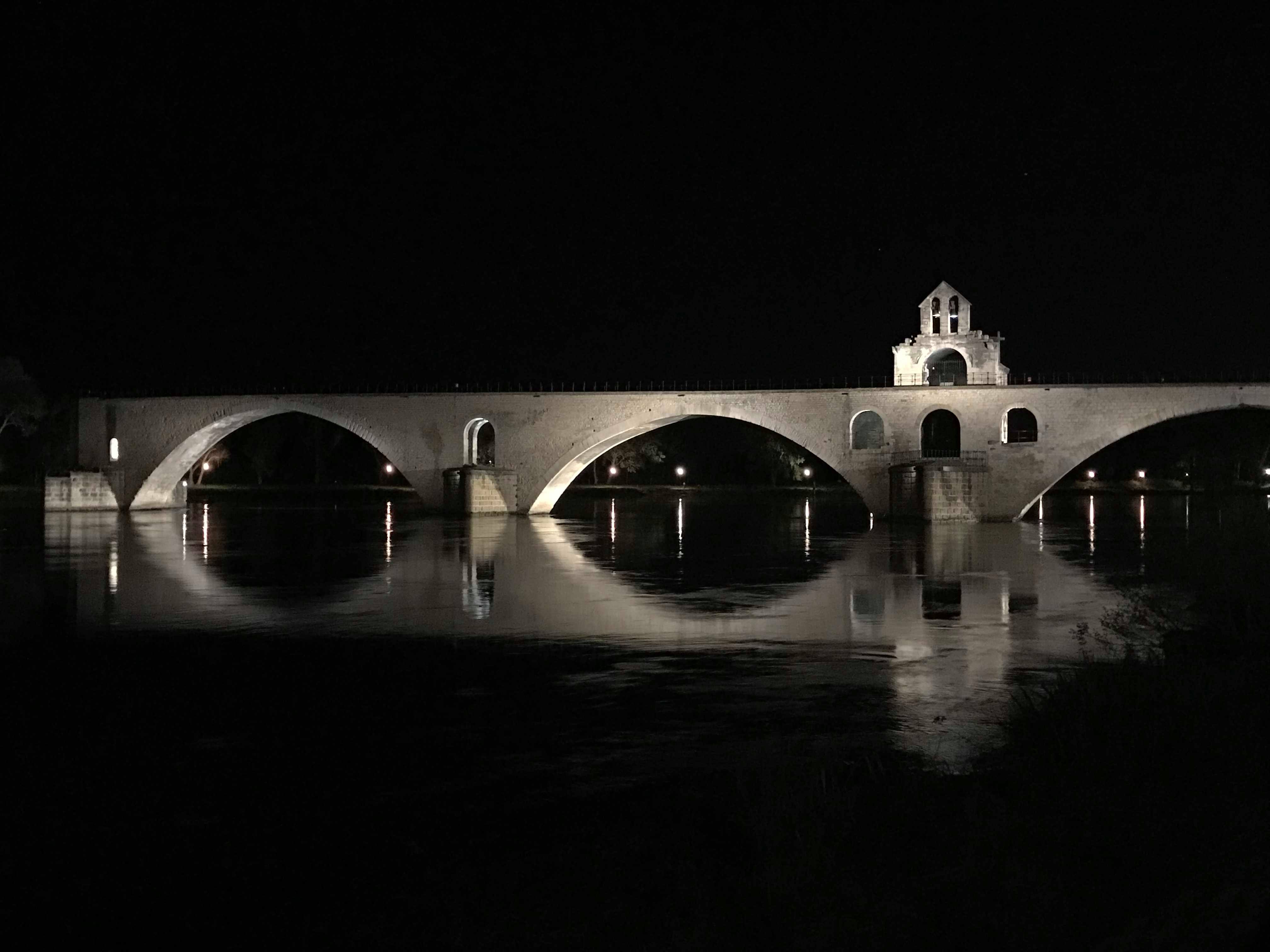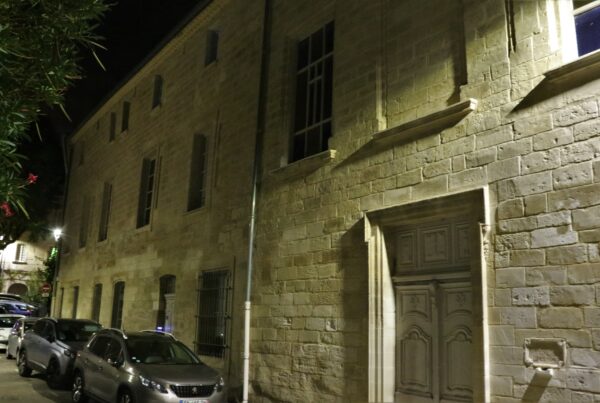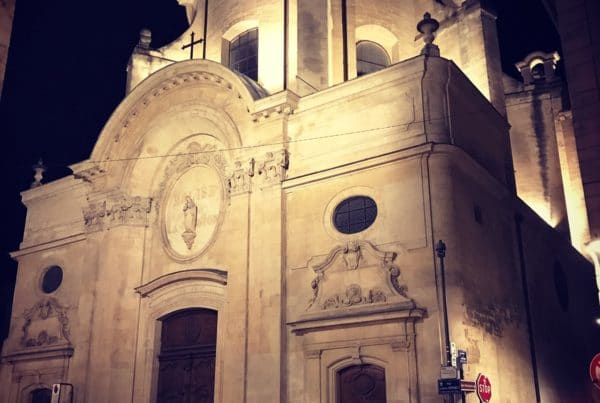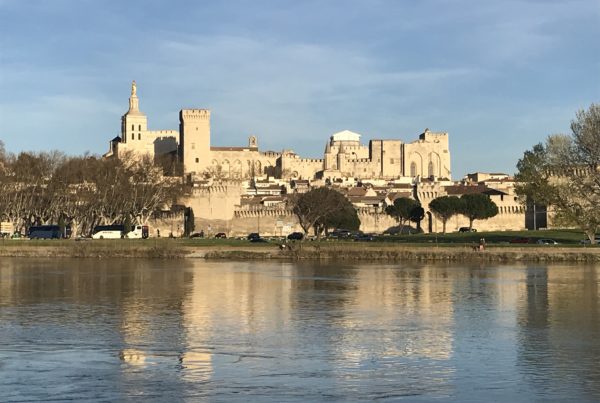The Saint Bénézet bridge, more famous under the name of Avignon bridge is the symbol of the city. It is classified as a UNESCO World Heritage Site since 1995 and attracts thousands of visitors every year.
Why is this bridge so important in the French culture and in the imagination? Is it cut, not finished, broken or destroyed? We invite you to a journey through the centuries and along the water to discover the bridge of the city of the Popes.
Foreword: the Rhône, the source of everything
Since ancient times, the Rhône has been a route for trade and exchange. The various inhabitants of the Rhône region have moved on it since the time of the Rhodanians and the Phoenicians. Hannibal crossed it with his army in 218 BC. Since Roman times it has been an important trade route and many cities have developed at the crossroads of land-based trade routes with the Rhone. This is the case of Arles, Avignon, Vienne, Lyon.
During the pre-Christian era, the Rhône was considered as an angry deity. Its rages were legendary and many sacrifices were made to appease it. The location of the city on a rocky prominence is not by chance. It was to protect itself from the very frequent floods. Some of these have remained famous, as in 1856 when the Rhône destroyed part of the ramparts from the Saint Roch gate to the Saint Dominique gate. The water went up to the square of the collegiate church of Saint Agricole.
Even if the Rhône began to be dominated from the beginning of the 20th century, floods are still very frequent in Avignon. The last important flood of the Rhône hit Avignon in 2003.
The legend of the bridge of Avignon
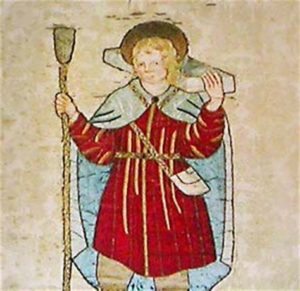
Saint Bénézet
It all began when a shepherd from the Ardèche came to Avignon in 1177. Little Benoit was only 12 years old when he received the divine order to go and build a bridge in Avignon. The lord said to him: “Bénezet take your staff, go down to Avignon, the capital on the water, talk to the inhabitants and have a bridge built there.” So he set out from his village of Burzet.
When he arrived in Avignon, he went to what is now the palace square. He announced the word of God. This news was received by the inhabitants with mockery and derision. The prelate then asked Bénezet (Benoit in Provençal) to take a rock and throw it into the river. As he approached the rock, two angels appeared and helped him throw it into the Rhone. This was the first stone of the building.
This legend spreads from the 12th century. The story of Bénezet is quite different. He would have founded a charitable organization to build and maintain the bridge and also to help travelers. The brothers of this institution were lay people. He died in 1184 before the bridge was completed. He is called a saint, although no process of beatification has been opened. The lower chapel of the second pillar contained his relics before their transfer in 1674 to the church of the Place des Corps Saints.
The construction of the bridge of Avignon
The Saint Bénezet bridge would have been, according to the historians, in permanent works between the XIIth and the XVIth century. It is likely that the bridge was a mixture of masonry and wooden parts. Its construction began in 1177 and was completed in 1185 (according to legend) or 1293 (according to historians).
During this period, the construction of the bridge was done in summer when the water level was the lowest. The workers (about 100) built one to two pillars of the bridge per year.
Constructions techniques :
For the construction of the pillars, there are three very distinct situations depending on the terrain.
First situation: while clearing a bed of pebbles, the workers came across dry soil. They therefore laid out the wooden footing. It served as a stable and insulating platform on which the pillar was built.
Second situation: after clearing the pebbles, one could fall on wet ground. It was therefore necessary to create a formwork, called cofferdam. The double wall of the cofferdam is made watertight by an agglomeration of earth and manure. The water is then drained off with pumps or buckets. Once the soil was dry, the workers planted wooden piles using a machine called a sheep. The sole rested on these stakes.
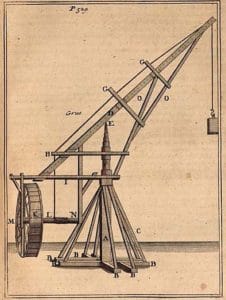
Engine for the wooden pillars
Third situation: this is the most delicate situation. Indeed, it is the one that consists in creating a pillar in the water. A cofferdam was still used but this one was deeper. Another difficulty was that all the work was done from boats subject to the river current. The pumping was also slower. Once the ground was reached, wooden piles were replanted in order to lay the footing.
When two pillars were built, a wooden formwork was placed on which the stones that would form the arches were laid.
Why did the bridge not stand the test of time and destroy itself?
Recent research has managed to answer this question.
There are several factors:
Climatic factor: in the middle of the 12th century, the Little Ice Age began. A climatic phenomenon that cooled Europe. With the arrival of spring, the melting of the ice led to major floods. The weight of the water weakened the pillars of the bridge. In addition, the changes in the level of the river caused severe erosion. This will make the pillars turn on themselves.
Geological factor: contrary to the bridge of Pont Saint-Esprit which is put on rock, that of Avignon is put on a silty ground and on a bed of pebbles. This difference will make the bridge of Avignon more vulnerable to the attacks of the river.
Economic factor: to maintain the bridge, an organization was created, half secular and half religious. This organization was also in charge of maintaining the hospitals. In the middle of the 13th century, this organization split in two. The religious joined together in the confraternity which managed the hospitals. The laity was responsible for the maintenance of the bridge. Deprived of the financing by the charity, they could not maintain the bridge properly.
The famous song and dance
This song has made the bridge famous all over the world. It appeared as early as the 15th century. The version we know comes from the operetta “le sourd ou l’auberge pleine” by Adolphe Adam in 1853. This nursery rhyme tells what happened on weekends on the island of Barthelasse. At that time, there were guinguettes installed and the inhabitants of Avignon used to rush there to picnic and dance. So we danced under the bridge and not on it. This song is used to learn French in many countries around the world.
Lyrics of the song :
In French :
Sur le pont d’Avignon, on y danse, on y danse, Sur le pont d’Avignon, On y danse tous en rond.
Les belles dames font comme ça, Et puis encore comme ça.
Sur le pont d’Avignon, on y danse, on y danse, Sur le pont d’Avignon, On y danse tous en rond.
Les beaux messieurs font comme ça, Et puis encore comme ça.
Sur le pont d’Avignon, on y danse, on y danse, Sur le pont d’Avignon, On y danse tous en rond.
Les militaires font comme ça, Et puis encore comme ça.
Sur le pont d’Avignon, on y danse, on y danse, Sur le pont d’Avignon, On y danse tous en rond.
Les musiciens font comme ça. Et puis encore comme ça.
Sur le pont d’Avignon, on y danse, on y danse, Sur le pont d’Avignon, On y danse tous en rond.
In English :
Lyrics to the song:
On the bridge of Avignon, one dances there, one dances there, On the bridge of Avignon, One dances there all in round.
The ladies go like this, And then again like this.
On the bridge of Avignon, we dance, we dance, On the bridge of Avignon, We all dance in circles.
The beautiful gentlemen do like this, And then again like this.
On the bridge of Avignon, we dance, we dance, On the bridge of Avignon, We all dance in circles.
The soldiers do like this, And then again like this.
On the bridge of Avignon, we dance, we dance, On the bridge of Avignon, We all dance in circles.
The musicians do like this. And then again like that.
On the bridge of Avignon, one dances there, one dances there, On the bridge of Avignon, One dances there all in circle.
The Avignon Bridge now on day
Classified since 1995 with the Palace of the Popes, in the world heritage of UNESCO, the bridge is today one of the emblems of Avignon. It is one of the monuments of the city. There is an entrance ticket coupled with the Palace of the Popes. It is the best solution to discover these medieval jewels.
Moreover, the banks of the Rhône are accessible to walkers and bicycles. You can enjoy a nice postcard while walking.

View of Avignon with the bridge and the palace
The Pont d’Avignon and the Noctambules
You have the possibility to discover the Avignon bridge during the day during the tour “Around the Palace“. You can also admire this famous bridge at night during the Night owl of the Pope.
Visit the bridge of Avignon
You can visit the Saint Benezet bridge every day.
From March 1st to November 5th, it is open from 9am to 7pm
The rest of the year, the Pont d’Avignon is open from 10am to 5pm (6pm during school vacations).
The price of the ticket alone is 5 euros but you can buy a combined ticket with the Palace of the Popes and the gardens for 17 euros.


